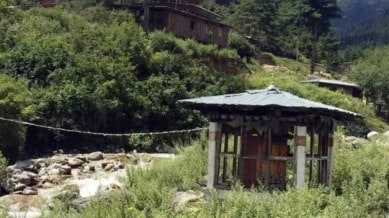Stay updated with the latest - Click here to follow us on Instagram
In a first since 2020, Tawang sector remained calmer in 2023
Regular and coordinated military patrolling on India and China sides led to comparatively friction-free year

The strategic Tawang sector in Arunachal Pradesh remained a lot calmer in 2023 compared to the previous three years, courtesy Indian and Chinese troops’ regular patrolling in the region.
The sector was free of major clashes between Indian and Chinese troops last year — a first since the military standoff between India and China began in 2020, The Indian Express has learnt.
monthly limit of free stories.
with an Express account.
Senior officials familiar with the developments in the region said that in 2023, Tawang did not see any major face-offs along the Line of Actual Control (LAC) between the two sides. This was a first in the last four years at least, they said.
The clash-free year was a result of regular engagements between the two sides, the officials said. “We have been engaging with them and have also been trying to evolve a mechanism where we carry out coordinated patrols up to our own side of the LAC,” an official told The Indian Express.
“There have also been more engagements at the local level. While the existing mechanism of BPMs (Border Personnel Meeting) in Bum La have taken place, regular local-level interactions have taken place at various interaction points,” the official said, adding that Indian troops have been actively making efforts to engage with the other side at multiple levels.
Officials said that having seen the last few clashes, the Chinese People’s Liberation Army have also been aware that the Indian side is well prepared in terms of deployment of troops and equipment, adding that they hope the situation remains this way.
“We have been trying to engage and should be able to maintain peace without compromising on our stand,” the official said.
Officials, however, said that a peaceful year does not mean the usual threats in the area have totally eroded. “We have to maintain constant vigil and have to be on our toes to watch out for any activity along the LAC,” an official said.
The strategic Tawang sector has multiple disputed areas along the LAC which have traditionally remained friction points between India and China.
According to sources, apart from the minor skirmishes which have often taken place between the two sides, one or two major face-offs in a year usually before the onset of summers and winters have traditionally taken place in these areas. Many of these face-offs are not usually declassified.
In December 2022, there was a major clash in the disputed Yangtse area of Tawang as a large patrol of over 200 PLA soldiers had tried to transgress the LAC. Indian troops manning the LAC had contested them firmly and the troops on both sides had received minor injuries.
In 2021, at least two major clashes took place in the sector. One of them took place in October between the border pass of Bum La and Yangtse after a large patrol of over 200 Chinese soldiers transgressed the LAC and attempted damaging unoccupied bunkers when they were countered by Indian troops. Several Chinese troops were injured in the incident.
A second clash is learnt to have taken place around April-May 2021 near Yangtse, and other smaller face-offs in Zimithang and Lungro La in the Tawang sector were understood to have taken place around the same time. These incidents were unreported.
According to sources, in 2020, a major clash had taken place between the two sides in Yangste weeks before the Galwan valley clashes in eastern Ladakh. Later that year, the Chinese were learnt to have sent in large patrols to the area, but there were no major clashes. These events, too, were not reported.
Other reported incidents of Chinese aggression in the region include a major face-off in 2016 when a large patrol of over 200 Chinese troops had transgressed into the LAC but had gone back in a few hours. Chinese PLA troops in 2011 had tried to scale a 250-metre-long wall on the Indian side of the LAC and damaged it. New Delhi had subsequently lodged a protest with Beijing over the incident.
China has always tried to claim Tawang as part of a larger Tibet, while calling Arunachal Pradesh as southern Tibet. India has always kept the region militarily fortified.
During the 1962 war between India and China, Bejing had captured Tawang within the first few days. Tawang’s historical significance lies in it being the birthplace of the sixth Dalai Lama, making it an important seat of Tibetan Buddhism after Lhasa. From the military and strategic point of view, Tawang provides geographical access up to the Brahmaputra plains and provides the shortest axis to Tezpur in Assam. The lines of communication from Tawang stretches to Guwahati and the extended Siliguri corridor which amplifies its military importance.